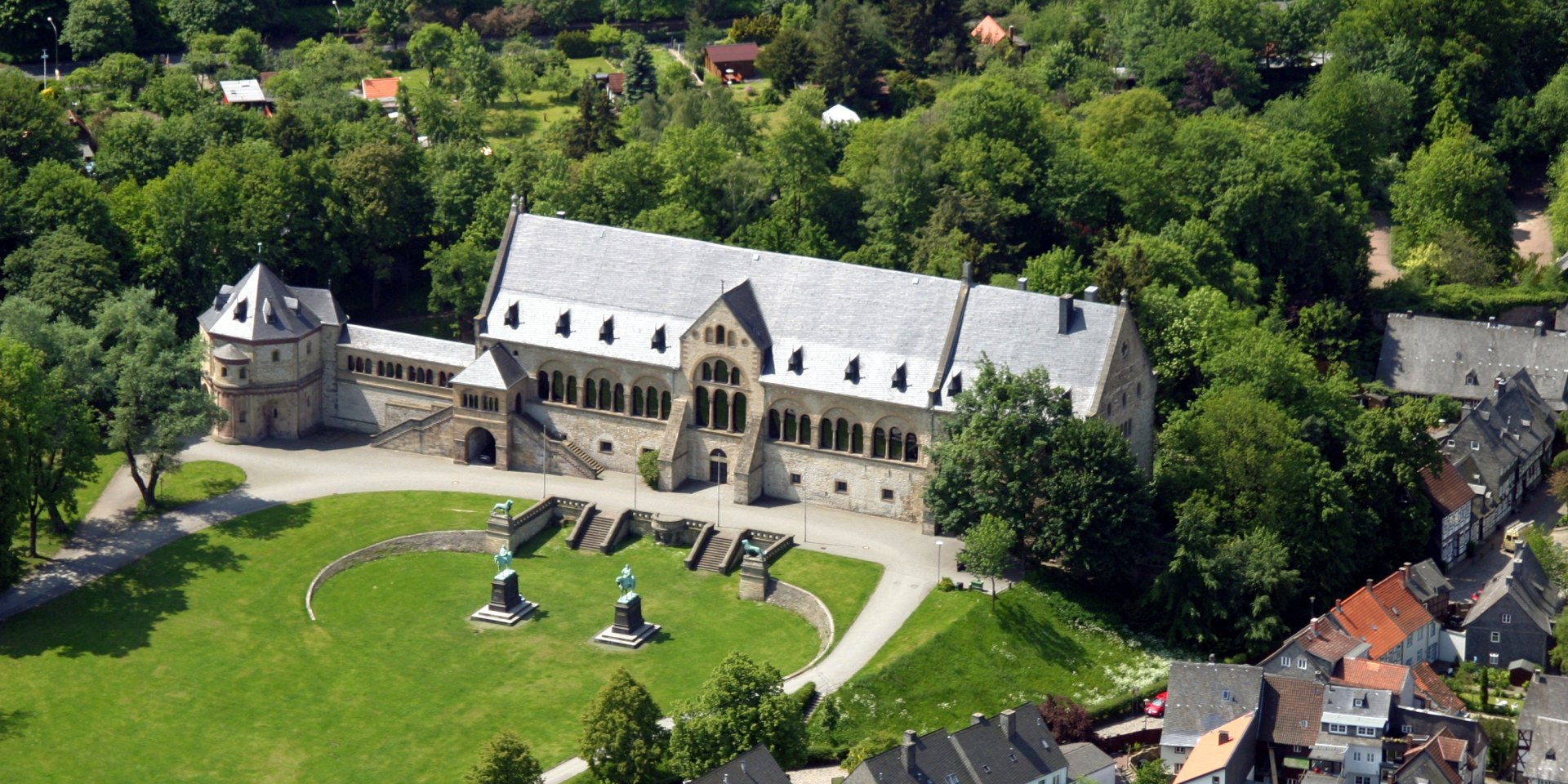The Imperial Palace (Kaiserpfalz Goslar) was built in the period from 1040 to 1050 and is a unique monument in the tradition of secular architecture – a must-see for every visitor to Goslar.
The building ensemble of the Imperial Palace was used above all by the Salian emperors as a favoured residence and even shortly after its completion it impressed contemporaries so much that the chronicler Lampert von Hersfeld spoke of the “most famous residence in the empire”. Since 1992 the castle complex, together with the old town of Goslar and the Rammelsberg, has been listed as a UNESCO World Heritage culture site.
For over 200 years, German history was made at the Imperial Palace during numerous imperial assemblies and court councils. All the wall compartments of the “aula regia”, the Imperial Hall measuring almost 800 square metres, have been decorated with scenes that recount the history of the Holy Roman Empire. Every hour, a guided tour lets visitors view and appreciate the paintings and learn about the exciting history of the Imperial Castle through the ages. An exhibition in seven vaults on the ground floor displays outstanding art.
In the Castle Chapel of St. Ulrich, a notable jewel of medieval architecture, the heart of Emperor Henry III lies under a memorial slab. The narthex of the cathedral in the vicinity of the Imperial Castle is formed by the preserved foyer of the important abbey church of St. Simon and Judas, which was demolished due to dilapidation in 1820. It contains outstanding architectural fragments and the richly decorated sandstone plinths of the imperial throne.
Today the Imperial Castle functions not only as a museum but also hosts weddings and events. The registry office of the town of Goslar offers various options for weddings in the historical rooms, while the imposing Imperial Hall has also proved itself an excellent venue for conferences.


